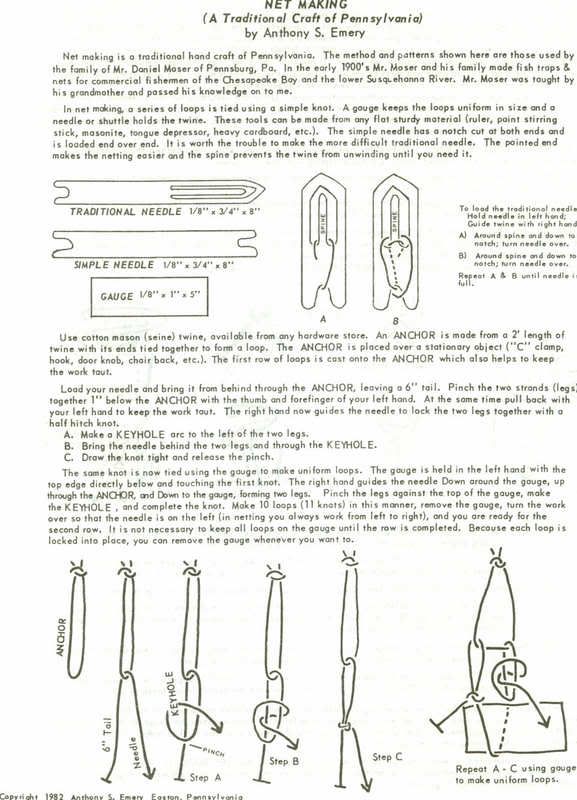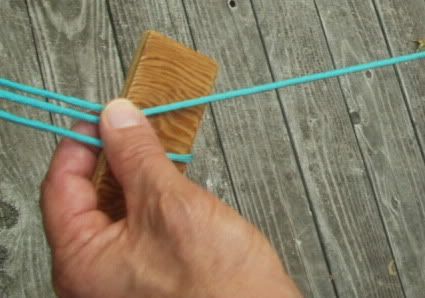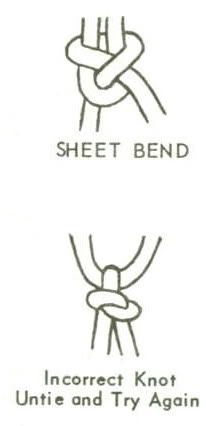I wrote these instructions 30 years ago this year. They have stood the test of time


Here are a few hints to help the beginning Net maker:
1. MAINTAIN THE PINCH. Pinch the 2 legs of the previous loop and the Working End between your thumb and forefinger
against the top of the gauge. This prevents the working end from slipping back.

2. When you make a sheet bend, you are first forming a half hitch around the 2 strands of the loop you are tying into.
As you tighten draw the knot to the right instead of down to take out the slack. As you see the half hitch form on the
two legs gradually ease it down to your thumb and forefinger. Do not release your pinch until the half hitch is locked
into place, forming the sheet bend.
3. Keep pulling back to maintain some tension in the work.
4. The most common mistake a novice makes is letting the half hitch form below the loop being tied into.

5. As indicated in the dimensions of netting needles in my instructions, the needle used MUST be narrower than the gauge you are using. This is so that the loaded needle can pass easilly through the meshes you are tying into.


Here are a few hints to help the beginning Net maker:
1. MAINTAIN THE PINCH. Pinch the 2 legs of the previous loop and the Working End between your thumb and forefinger
against the top of the gauge. This prevents the working end from slipping back.

2. When you make a sheet bend, you are first forming a half hitch around the 2 strands of the loop you are tying into.
As you tighten draw the knot to the right instead of down to take out the slack. As you see the half hitch form on the
two legs gradually ease it down to your thumb and forefinger. Do not release your pinch until the half hitch is locked
into place, forming the sheet bend.
3. Keep pulling back to maintain some tension in the work.
4. The most common mistake a novice makes is letting the half hitch form below the loop being tied into.

5. As indicated in the dimensions of netting needles in my instructions, the needle used MUST be narrower than the gauge you are using. This is so that the loaded needle can pass easilly through the meshes you are tying into.


